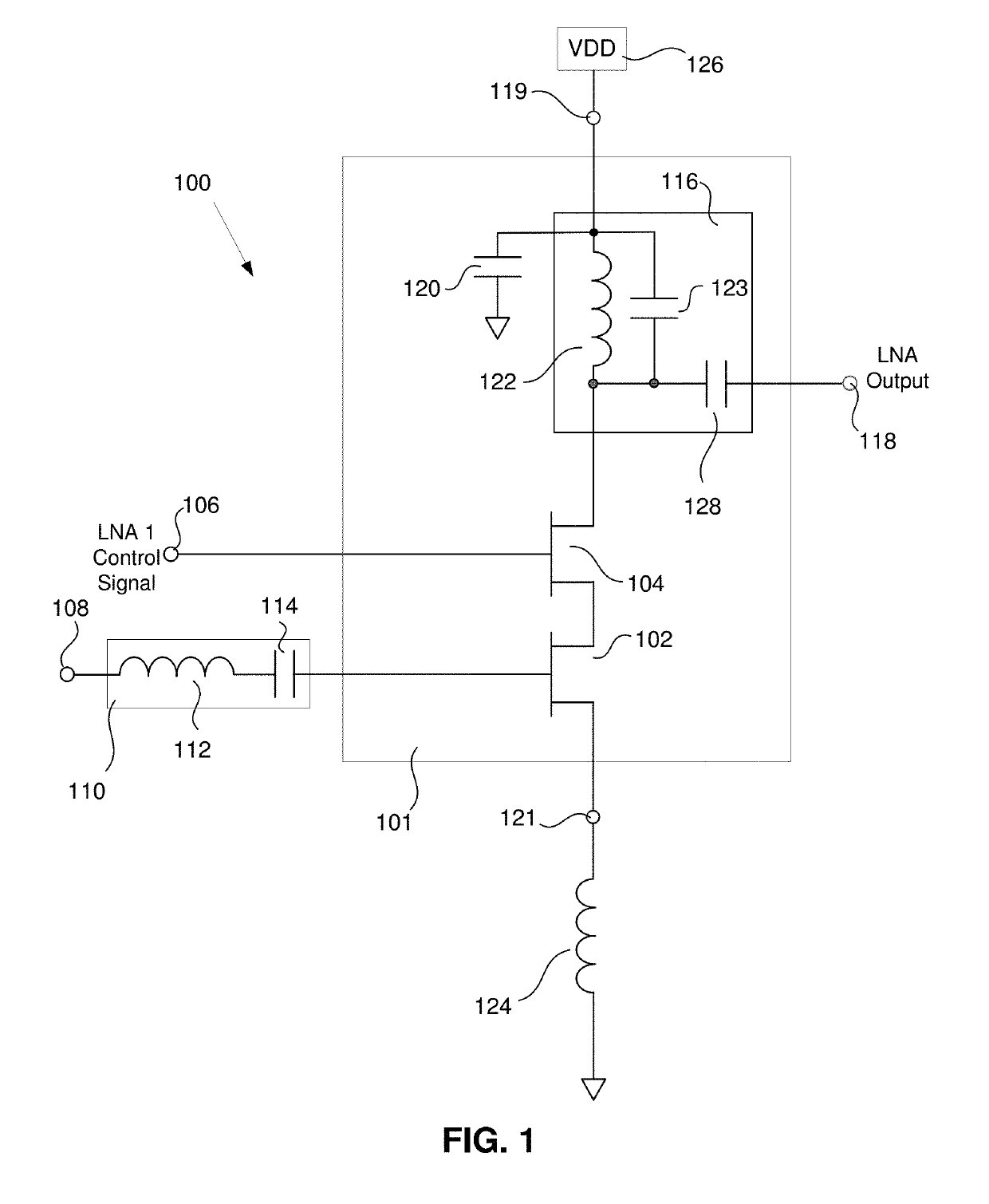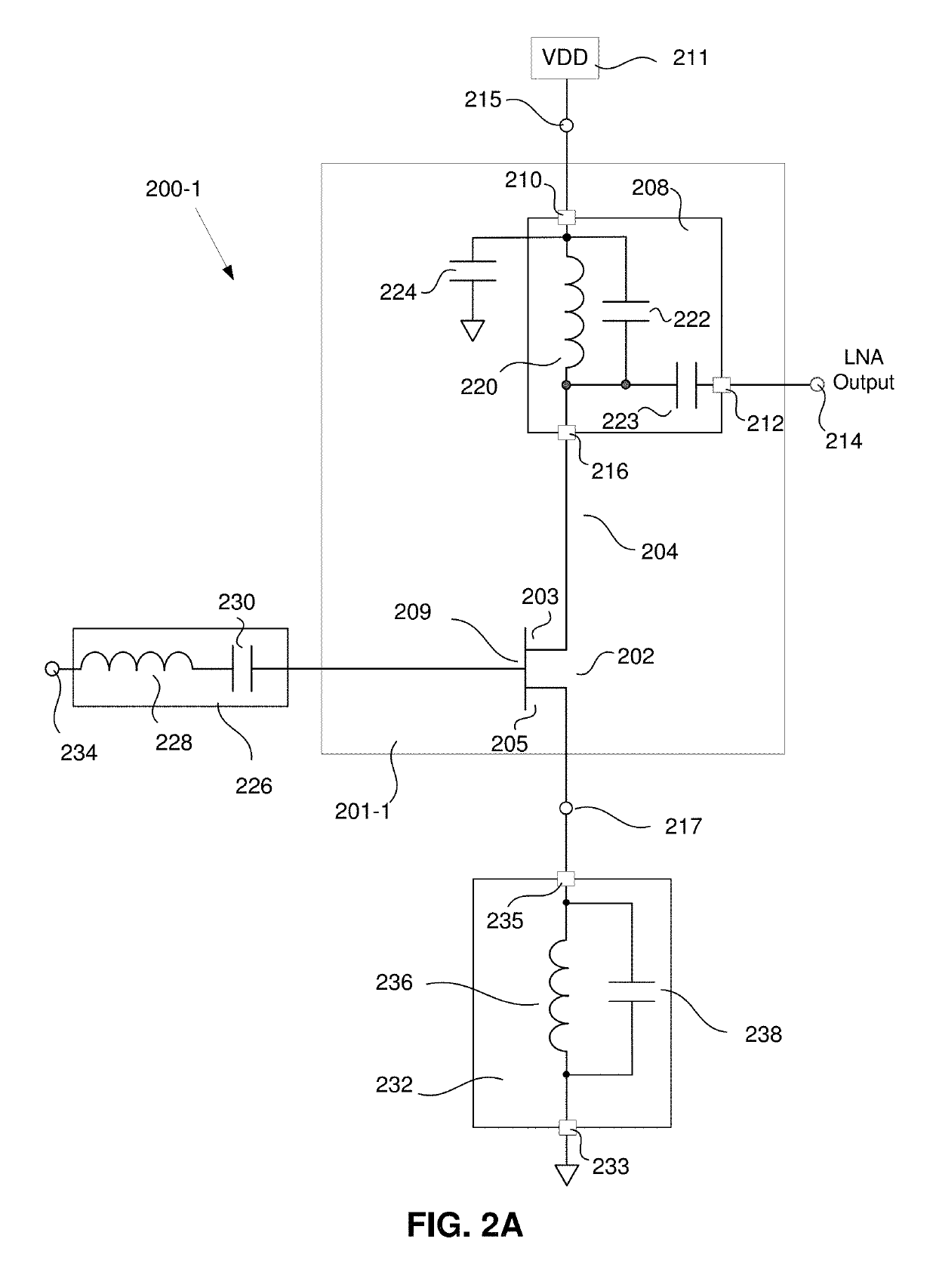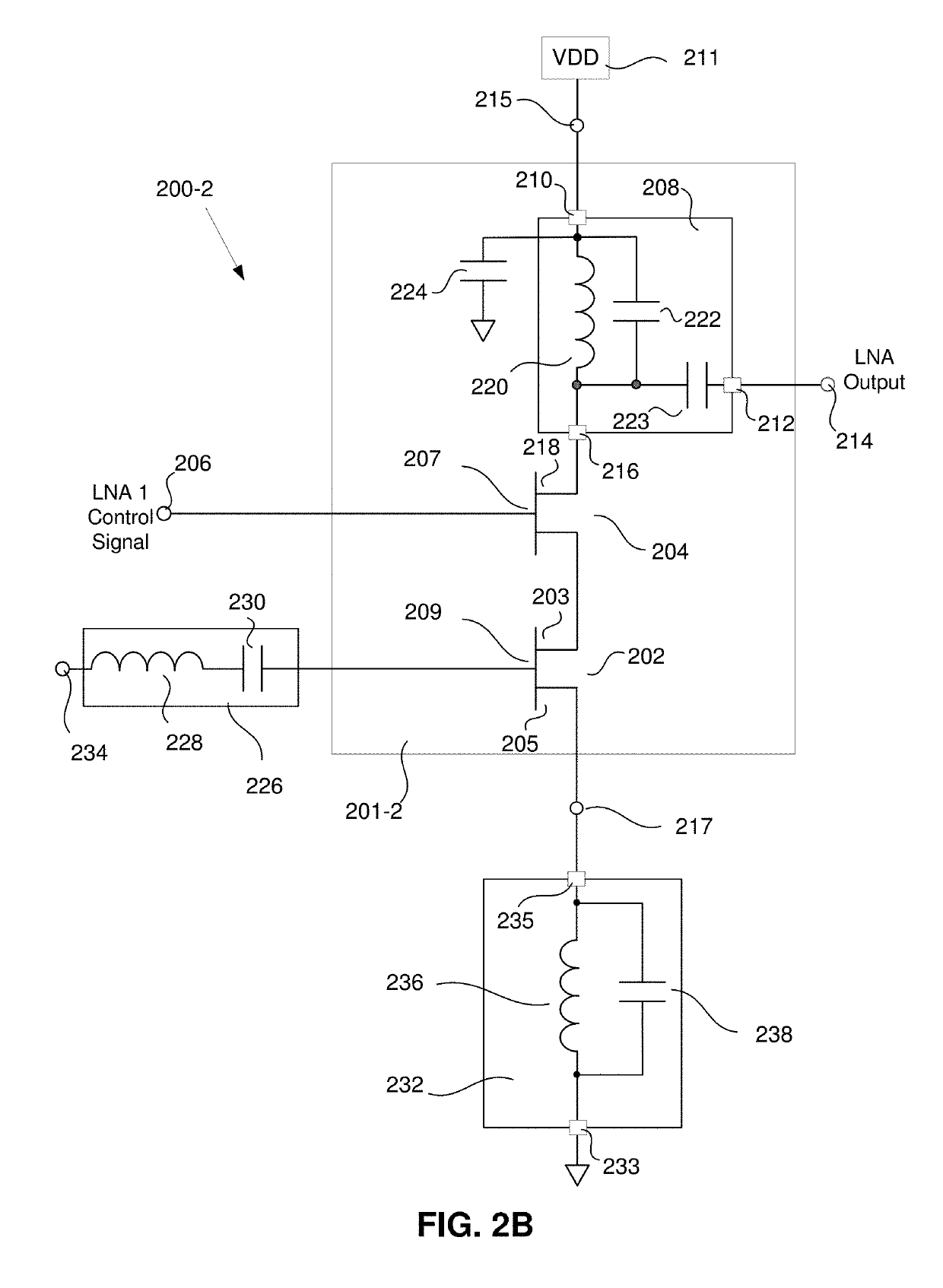Input Third Order Intercept Point in Low Noise Amplifier with Degeneration Tank Circuit
a low-noise amplifier and degeneration tank technology, applied in the field of rf front ends, can solve the problems of reducing the overall receiver performance, introducing distortion to the amplified input signal, and many rf transceivers are quite complex two-way radios, and achieve low power consumption, high third-order intercept, and low-noise amplifiers.
- Summary
- Abstract
- Description
- Claims
- Application Information
AI Technical Summary
Benefits of technology
Problems solved by technology
Method used
Image
Examples
Embodiment Construction
[0033]FIG. 2A is a simplified schematic of a front end amplifier 200-1 of a communication receiver having an enhanced input third order intercept point (IIP3). In some embodiments of the disclosed method and apparatus, the front end amplifier 200 comprises a low noise amplifier (LNA) 201-1. The LNA 201-1 has a signal input 234, a signal output 214, a supply current input 215 and a supply current output 217. The LNA 201-1 comprises a transistor 202. In some such embodiments, the transistor is a field effect transistor (FET) 202. However, it will be understood by those skilled in the art that other types of transistors may be used, including, but not limited to, bipolar junction transistors. Furthermore, any type of FET may be used to implement the LNA 201-1, including, but not limited to metal-oxide semiconductors (MOSFETs), junction field effect transistors (JFETs), insulated gate FETs (IGFETs), metal semiconductor FETs (MESFETs), etc. While some types of transistors may be better s...
PUM
 Login to View More
Login to View More Abstract
Description
Claims
Application Information
 Login to View More
Login to View More - R&D
- Intellectual Property
- Life Sciences
- Materials
- Tech Scout
- Unparalleled Data Quality
- Higher Quality Content
- 60% Fewer Hallucinations
Browse by: Latest US Patents, China's latest patents, Technical Efficacy Thesaurus, Application Domain, Technology Topic, Popular Technical Reports.
© 2025 PatSnap. All rights reserved.Legal|Privacy policy|Modern Slavery Act Transparency Statement|Sitemap|About US| Contact US: help@patsnap.com



